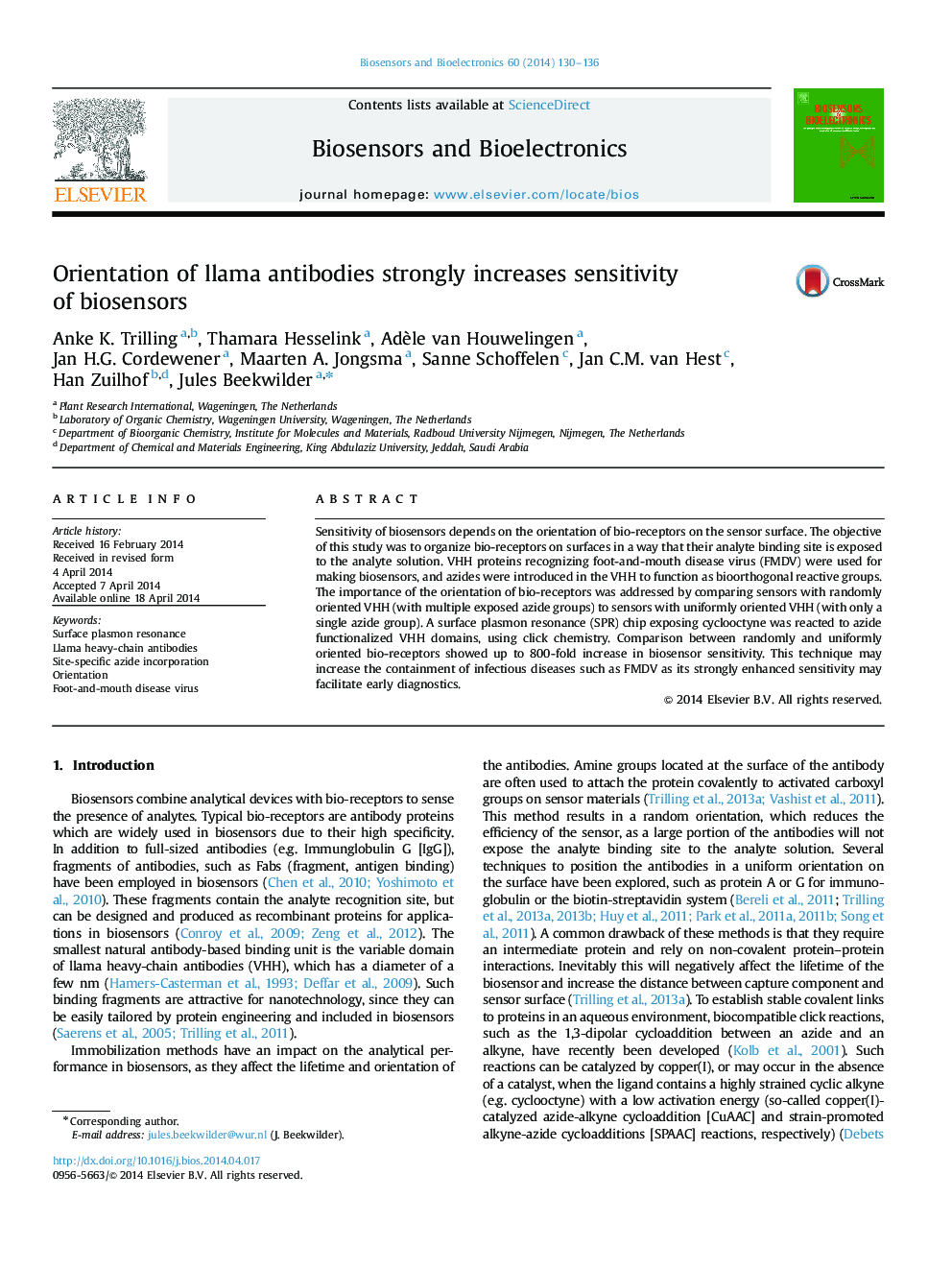| Article ID | Journal | Published Year | Pages | File Type |
|---|---|---|---|---|
| 866426 | Biosensors and Bioelectronics | 2014 | 7 Pages |
•An SPR biosensor for foot-and-mouth disease virus was built using llama antibody fragments.•Antibodies were provided with one or five azide groups by protein engineering.•Click-chemistry was used to achieve uniform or random orientation of the antibodies.•The detection limit of the uniformly-oriented biosensor was 800 fold lower compared to the randomly oriented biosensor.
Sensitivity of biosensors depends on the orientation of bio-receptors on the sensor surface. The objective of this study was to organize bio-receptors on surfaces in a way that their analyte binding site is exposed to the analyte solution. VHH proteins recognizing foot-and-mouth disease virus (FMDV) were used for making biosensors, and azides were introduced in the VHH to function as bioorthogonal reactive groups. The importance of the orientation of bio-receptors was addressed by comparing sensors with randomly oriented VHH (with multiple exposed azide groups) to sensors with uniformly oriented VHH (with only a single azide group). A surface plasmon resonance (SPR) chip exposing cyclooctyne was reacted to azide functionalized VHH domains, using click chemistry. Comparison between randomly and uniformly oriented bio-receptors showed up to 800-fold increase in biosensor sensitivity. This technique may increase the containment of infectious diseases such as FMDV as its strongly enhanced sensitivity may facilitate early diagnostics.
